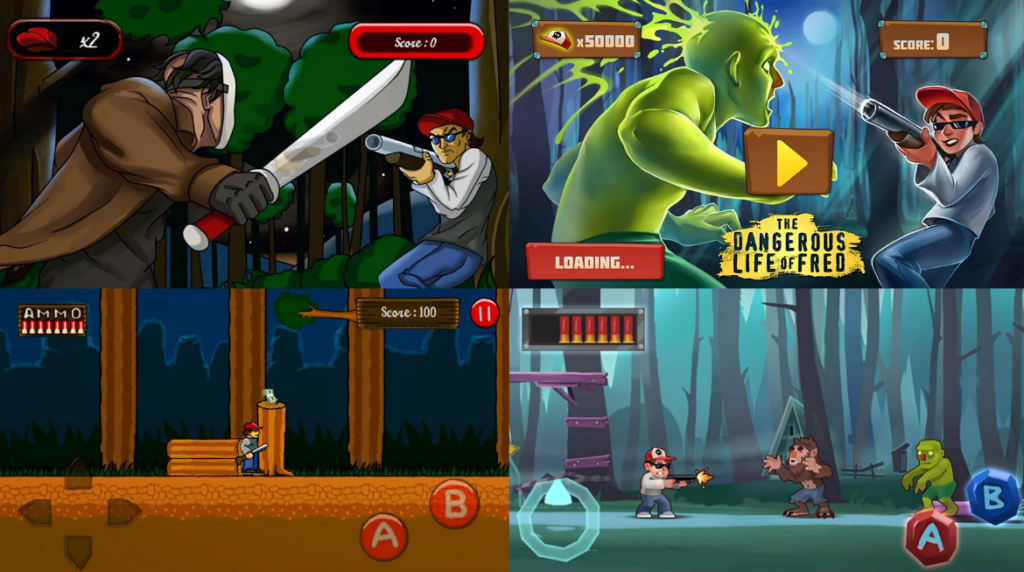
Hello there! As game developers who’ve journeyed through the ever-evolving landscape of video games, we’re thrilled to share our insights into one of the most beloved genres: platformer games.
For those just dipping their toes into the vast ocean of gaming or considering developing their own game, understanding what makes platformers tick can be both enlightening and inspiring. So, let’s explore the definition, types, and features of platformer games, all from a developer’s perspective.
Defining Platformer Games
At its heart, a platformer game is all about navigating a character through a series of platforms, obstacles, and enemies to reach a goal. It’s a genre that tests your timing, precision, and problem-solving skills, often rewarding you with that unbeatable feeling of achievement. From the moment the first platformer game graced our screens, it was clear this genre was something special.

Over the years, it has morphed and expanded into a myriad of forms, each offering unique challenges and experiences. As developers, we see platformers not just as games but as narratives that players interact with, each jump and obstacle a paragraph in their story.
For example, look at zombie platformer The Dangerous Life of Fred (btw, developers used custom 2d platformer assets by RetroStyle Games studio.
Main Types of Platformer Games
Single Screen PlatformersThese are the classics, where the entire level fits on a single screen. Think of the iconic Donkey Kong, where maneuvering from the bottom of the screen to the top to save the princess was the whole game. BTW, for this game developers used custom 2d platformer assets by RetroStyle Games studio.
These games are special because they:
- Focus on precise mechanics and puzzle-like challenges.
- Often, it requires mastering a small set of skills to succeed.
Side-scrolling platformers allow for bigger game worlds that go horizontally. This lets players go on longer adventures, find secret areas, and see different landscapes, all while avoiding obstacles and enemies.
Side-scrolling platformers keep introducing new gameplay ideas, like interacting with the environment, solving puzzles with physics, and using character abilities to move through levels.

Example: Limbo
Limbo stands out with its simple design, eerie atmosphere, and puzzles based on physics. It shows how side-scrolling games can offer deep gameplay beyond just running and jumping.
Side Scrolling Platformers
As technology advanced, so did platformers, evolving into side-scrolling adventures that allowed players to move through worlds much larger than a single screen could hold. Titles like Super Mario Bros. set the standard for the genre, introducing us to:
- A world of exploration and progression.
- The thrill of uncovering secrets and navigating through beautifully crafted levels.
Vertical Scrolling Platformers
Then, there are the vertical adventurers, games that take the excitement upwards. In a vertical platformer, gravity is your constant companion, pushing you to leap higher and higher.
Games like Ice Climber showcase:
- A unique perspective on the platformer genre, emphasizing vertical movement and the anticipation of what’s just off-screen.
- Challenges that test your ability to think and move on the fly.
3 Features of a Platform Game
Dynamic Game Mechanics
The essence of a great platformer lies in its mechanics. The joy of executing a perfect jump or narrowly avoiding an obstacle is unparalleled. For developers, creating fluid, responsive controls is paramount, as it:
- Ensures that players feel fully connected to the game world.
- Makes the challenge of the game fair and rewarding.
Level Design and Challenges
Level design is very important in platformer games because it affects how much players enjoy the game. By making levels well, developers can create fun and engaging games that challenge players. This includes teaching players how to play the game in a fun way, encouraging them to explore, and giving them obstacles that help them learn and test their skills.
A key part of level design is to teach players how to play without making it obvious. This means players learn by playing rather than going through long tutorials.
Example: Super Mario Bros.
In Super Mario Bros., players learn about power-ups like the Super Mushroom right away because it’s placed where you can’t miss it. The level also teaches players how to jump and break blocks by how it’s set up, all without needing to tell them what to do.

Good levels also make players want to explore and find creative ways to solve problems. This means putting in challenges that can be solved in different ways.
Visual Style and Soundtrack
Never underestimate the power of visuals and music. They do more than just make a game look and sound good; they:
- Create an immersive world that captivates players.
- Enhance the emotional and psychological impact of the game experience.
Practical Examples and Tips for Beginners
Tips from Developers
Diving into platformer game development can be daunting but incredibly rewarding. Here are a few nuggets of wisdom for those just starting out:
- Start simple. Focus on getting the core mechanics right before adding complexity.
- Play lots of platformers. Understanding what you enjoy as a player can inspire your development journey.
Examples of Platform Games
For those eager to explore the genre, check out some of the best PC platformers and online game platforms, such as Celeste and Hollow Knight.
These games exemplify:
- Masterful game design that balances challenge with accessibility.
- Stories and worlds that resonate deeply with players.
Conclusion
Platformer games are a testament to the creativity and innovation that define video gaming. Whether you’re a player marveling at the leaps and bounds of your on-screen avatar or a developer crafting the next great adventure, the platformer genre offers endless possibilities.
We hope this guide has provided a solid foundation for beginners to start their exploration or development journey in the world of platform games. Remember, every great game starts with a single jump. So, take that leap, and let’s create something amazing together.













